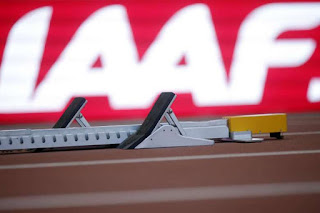Hyperandrogenism Regulations in Track and Field: Pride & Prejudice or Discrimination in Disguise?
It was in 2009 when I first had to deal with a matter that touched upon gender verification in sport. I advised the South African track and field federation on the matter of Caster Semenya and I was acquainted with the sensitive and complicated details of this developing area of the sports law discipline. Although the confidential information of the case could not be made available to the public, a summary of my arguments on the matter were published back in 2009 http://www.cecileparkmedia.com/world-sports-advocate/article_template.asp?Contents=Yes&from=wslr&ID=1172
In the premises, it is also my submission that the present discussion raises legal and ethical questions and creates issues of immense complexity. In this light, one of my introductory submissions against the IAAF back in 2009, (on the Caster Semenya matter) was that the examination of evidence and the factual analysis demonstrated that the track and field authorities were - and still are - unprepared to deal with the particular needs of an individual, whose possible private physical and anatomical peculiarities have now become the subject matter of a public discussion.
Similarly, the new IAAF regulations attempt to create this unjustified and unnecessary policing of the division between men and women, by placing emphasis on gender and by creating a 'burden of proof' against the individual concerned. The first criterion in the new proposals declares (with a degree of political correctness) "...any athlete who has a Difference of Sexual Development (DSD) that means her levels of circulating testosterone (in serum) are five (5) nmol/L or above and who is androgen-sensitive to meet the following criteria to be eligible to compete..." and goes on to create this division between men and women: "she must be recognised at law either as a female or as intersex (or equivalent)..." (and I am not quite sure what the term 'equivalent' implies in this light). In essence, this is, quite possibly, an implicit attempt to create issues of discrimination, which takes us back to the anachronistic and prejudicial attempts against an athlete to demonstrate that she is a woman or an interex, or something in between. Evidence and well recorded cases from the past demonstrate how humiliating, diminishing and intrusive this process can be for a person and how dangerous it may develop to be, considering the stigma attached on persons who have to prove their sex and any peculiarities that come with it. Examples of suicide of athletes in the past are well recorded and I fear that the IAAF is opening Pandora's box.
It follows, that this is the wrong approach to take and one that creates legal and ethical complications. The primary consideration relates to the argument that any exclusion from athletic competitions and/or any other justification to exclude an athlete from her trade, must be made with reference to medical evidence and must be based on a regulatory framework with a strong legal foundation. This is not the case here. The contention on behalf of the IAAF that there is scientific evidence to show that the previous testosterone threshold of an individual athlete creates a performance advantage for such athlete, does not necessarily mean to say that the new regulations are based on legal certainty and justification or are unintrusive enough to justify the legitimate aim pursued by the IAAF. It follows that such regulations are not proportionate to that aim that the IAAF is pursuing.
Although similar arguments (on the protection of level-playing field) were raised, by the IAAF, in the matter of CAS 2014/A/3759, Chand v AFI & IAAF, Award of 24 July 2015 (please not this was an Interim Award) and the one of Oscar Pistorius, the truth of the matter remains that the new regulations, once again, exclude a whole category of female athletes in terms of a requirement against them to undergo medical treatment, should they wish to participate in competitions. It is submitted that this is hardly a compelling justification for the legitimate aim pursued. The scientific evidence submitted by the IAAF to demonstrate enhanced performance, is, with respect, questionable and, in any event, falls foul even of the Preamble to the WADA Code, which clearly talks about "...the pursuit of human excellence through the dedicated perfection of each person's natural talent." In other words, the relevant governing body here ignores this important premise and intention of the legislator, which places emphasis on the issue of 'natural talent.' One would be hard pressed to ignore the argument that the new regulations attempt to exclude this 'natural talent' from being applied and to a clear extent, they exclude an athlete's natural superior ability.
Notwithstanding any submissions in relation to Human Rights, it is my respectful opinion that this is an appalling situation and one that does not respect the rights of individual athletes. It also demonstrates how inadequate and incompetent self-regulation is, an argument that has been raised several times by many commentators around the world. In this light, it was not a long time ago when the same governing body attempted to persuade us that the artificial legs (or prosthetics if you prefer) of Oscar Pistorius offered him an unfair advantage. Similarly, we now have submissions that the new regulations, on hyperandrogenism, are in place, because female athletes with superior natural talent may have an unfair advantage and, therefore, they need to undergo medical treatment to have such natural ability reduced! With respect, this is an unacceptable, appalling and diminishing situation and, certainly, one which creates an unjustified stigma against individual athletes.
In the premises, I would like to refer my readers to the example of Caster Semenya (and any other athlete concerned), which, in my view, is interrelated and strictly connected with the new IAAF regulations. The athletic capabilities and the natural talent of such athlete must not be punished in the name of 'fair competition.' The IAAF's moral stance on precarious arguments tentatively submitted, must not be the basis for excluding individual athletes. In the case of Caster Semenya (and so many others), there is no compelling justification or clear-cut evidence to indicate that her performances are equivalent to those achieved by men. It may be the case that her results are extremely good, but they are the results of a naturally talented and superior female athlete. This does not, obviously, change the fact that her results are still within the female ranges and the world record in the 800m event set by Jarmila Kratochvilova in 1983 is yet to be broken.
The fact that the results of Caster Semenya are based solely on athletic ability fuelled by a natural superior talent, should not be questioned simply because she is an 'unusual woman; or because she is a strong and fast woman. If her sex is questionable (or even her physical ability), so is the argument that her sex may affect or distort a fair competition. Athletes like Caster Semenya, have identified themselves as women (albeit with some physical peculiarities) and this creates a right that must be safeguarded and protected by sporting authorities, especially where confidentiality has been breached. In any other event, it is my respectful submission that the sporting authorities could not and should not receive immunisation from judicial intervention.
Dr Gregory Ioannidis*
27 April 2018
Gregory Ioannidis is an international sports lawyer and an anti-doping litigation expert. He advised the South African track and field federation on the matter of Caster Semenya in 2009. He is the course leader of the Master's programme LLM International Sports Law in Practice at Sheffield Hallam University and an academic associate at Kings Chambers in Manchester.




Comments
Post a Comment